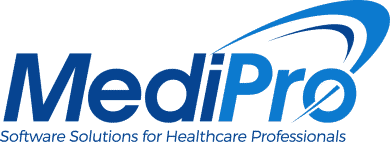Approximately over 6 billion insurance claims are filed annually or around 500 million claims per month. Of those claims, merely 40% are filed electronically. Roughly, 60% are still filed manually or on a paper claim form called a CMS 1500. Medicare alone receives more than 500 million claims yearly. Electronic claims processing reduces payment turn-around time by curbing the payment cycle. Congress has authorized electronic claims submissions formats. People can help by providing electronic claims processing and medical billing services for all types of healthcare providers in the required format. By filing claims electronically, electronic claims processing and medical billing can minimize standard error rates to less than 1 or 2%.
Paper claims have errors on them, which considerably reduces payment turn-around time. Around 30 to 35% of all paper claims are rejected because of typos, omissions and errors. Electronic claims are submitted to the carrier via modem after being checked for accuracy by either a billing service’s software or a claims Clearinghouse.
This audit or edit process lessens the average rejection rate of 30 to 35% down to about 1 or 2%. By checking electronic claims for accuracy initially, the claim is put in a payable status when it is received by the insurance carrier, therefore reducing payment turn-around time.
Yearly healthcare expenditures are augmented by over 10%. For the rest of the decade, each year, it is probable that there will be more than 4 million babies born, 20 million children will be under the age 5, over 4 million people will reach the age of 45, and more than 2 million people will turn the age of 65. The average person accounts for six physician encounters annually. More than 220 million Americans are covered by some kind of health insurance. That would mean there are many electronic claims processing services to provide.
The benefits of electronic claims processing is that it provides quicker payment turn-around time (90-120 days down to 7-14 days.) Staff training or retraining is not a requirement. There is usually no startup investment for the practice. It allows staff to focus on their patient’s ills rather than their bills. You are paid on more claims because of reduction in errors and it minimizes staff work hours and overhead expenses.
In a study carried out by the American Medical Association, it was likely to cost healthcare providers an average of $6 to $12 to file a claim. Using the services of a billing company, a physician will probably spend approx. $2 to $3 on every claim with electronic claims processing. Congress passed legislation on administrative simplification called the Health Insurance and Portability Act of 1996 (HIPAA) after years of discussion. This act signed into law August 1997 calls for the electronic transmission of core financial and administrative transactions, including billing, electronic claims processing, eligibility, and payment and remittance advice.
